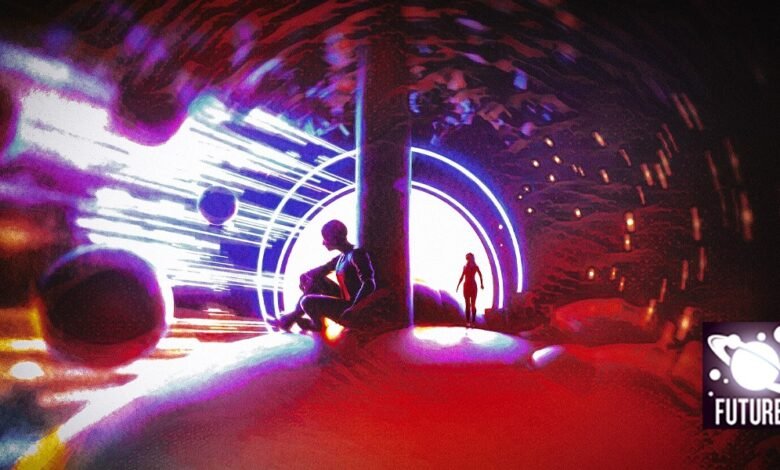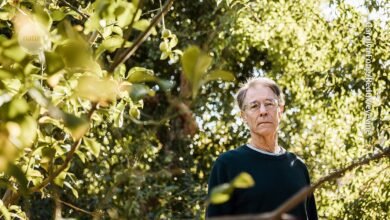Field observations of Ambula tardus on Planet IN-409

Everybody tells you it takes time to adjust to the aliens’ way of life, but you don’t really understand what that means, what that feels like, until you live among them, until you befriend one of them. Ambula tardus are immense, easily the size of three elephants, but that’s not the part that takes getting used to. They’re bipedal, like humans, but that’s about all they have in common with you. They look a little like an Earth willow tree, with tendrils that fan out in a canopy and more that creep across the ground to connect with one another. No, the thing that really blows your mind is how slowly they move.
Going in, you knew they only took, at most, ten steps in a lifetime, but to actually live that — to actually witness that — well, you were never the fastest kid when it was time to run the mile in high school, but you made up for it by hustling down the New York sidewalks like a pro, dodging and weaving with your feet always on the move. As someone who hated wasting time, you were always trying to do at least two things at once, which left you no time for friendship or lovers, not when you had so much to accomplish. Even on this planet, you arrived determined to fit in multiple studies in the precious time offered by your research grant.
Read more science fiction from Nature Futures
One alien step takes a good human year or so to complete, and it’s not so much a step as it is sliding forward one thick limb followed by the other. Interacting with the aliens is discouraged, yet you can’t help but think of AT-313 as a friend, seeing as they waved a tendril in your direction on your first day on the planet. The likelihood of it being coincidental is as likely as it being purposeful, but you took it as a sign and focused your attention on Attie, as you came to know them.
Your alien friend and their companions communicate through vast groundcover, like Earth trees communicating through mycorrhizal networks. Their language is complex, reflecting their inner worlds, but anyone who didn’t know them would assume them to be simple. You think of that old saying, how still waters run deep.
Attie, on the verge of their third step, reaches out tendrils to a nearby alien and they’ve agreed to reproduce. You’re there when, shortly after their fourth step, they deliver their offspring, a creature four times your size. You’re there as your friend’s offspring lands on the soft, moss-like ground, connecting their tendrils immediately with those around them. In a way, they’ll never be alone, and you find that both comforting and terrifying. You lived in a massive city filled to bursting with humans, but sometimes you felt far more isolated surrounded by millions of people than you do here among alien creatures.
Your research comes to an end when Attie is nearly at their tenth step. They are stooped now, like a tree bent in a strong wind at the top of a mountain. You can’t believe their life is nearly over. You can’t believe they’ve hardly moved from where they were born. And yet, through their network, they’ve conversed with more of their kind than you could ever hope to as a human limited to simple speech or the written word.
You postpone your trip back to Earth, wanting to be with Attie at the end. When your friend dies, they’re pulled underground, their body destined to become nutrients for those still alive. Attie’s mate and their child quiver and shake with grief, their tendrils swirling like they’re caught in a tornado, but they never let go of their network. They never let go of their friends. You join their grief, a rare touch of skin to alien flesh. They feel spongy yet firm, like a mushroom cap. They gently wrap tendrils around you, hugging you the way they’d seen humans hug each other when they arrived or left, or when they were hurt or filled with love. There’s no direct communication with them, but the aliens had been watching you as closely as you’d been watching them. Your salty tears fall, your liquid grief soaking into the ground.
When you arrive home, everybody moves too fast, passing you on the sidewalk, a far-away look in their eyes as they think of their frantic list of things to do. Your body tries to catch up to their mad swirl in a sort of muscle memory, but your mind and heart want no part of it.
You leave the crowded sidewalk for the park and find an isolated spot in the shade of a maple tree. You go through your pitifully short contact list, reaching out to old friends one at a time. It’s a sad imitation of the much more effective Ambula tardus network, but one finally responds — Emily, who runs marathons and reads science fiction and who says she’s always up for an adventure. She meets you at the park under the maple tree, and you begin the slow steps towards friendship and what really matters in life, the way Attie showed you.





